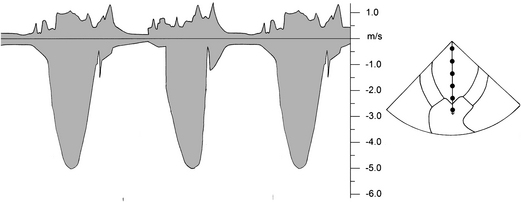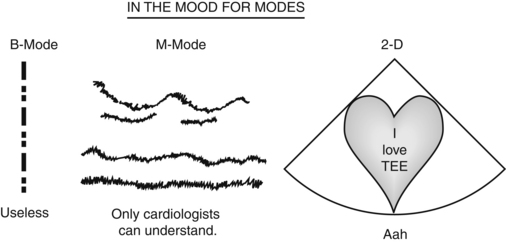Chapter 5 Principles of Doppler Ultrasound Jonathan Kraidin, Steven Ginsberg, William Jian and Kevin A. Jian Doppler works with sound. Sound is a mechanical, longitudinal wave that alternates between expanding and compressing the medium through which it propagates. This is analogous to a wave moving through the water. Normally, the ear perceives sounds up to 20 KHz. Higher frequencies are referred to as ultrasound, and unless you are a dog or bat you are not going to hear them. The rapid vibration of a piezoelectric crystal produces the ultrasound waves. The properties that describe the wave are1: 1. the period is the duration of each cycle 2. the frequency is the number of times the waves cycle per second (this is the reciprocal of the period) 3. the wavelength is the distance between two wave crests of the sinusoidal wave 4. the propagation speed, which is the speed the wave travels through the medium as it compresses and expands Doppler echocardiography allows the non-invasive assessment of blood flow, velocity and direction.2 It is based on the principle that a moving target will shift the reflected frequency higher or lower depending on whether it is moving toward or away from the transmitter. Using this principle, if one knows the frequency shift one can determine the velocity and direction of the blood flow. You can see the derivation of the Doppler Shift equation in the section, Derivation of the Doppler Shift Equation. For a returning signal the equation is: Let us break this equation down: Let’s look at some real numbers: How is such a small change in the frequency measured? The truth is that the frequency is not measured. The machine actually measures the phase shift between the outgoing and incoming signal. The phase difference correlates with the Doppler shift as a first-order approximation.3 A sound wave is emitted from the transducer. When this wave encounters differences in density it gets reflected back. If you scream over the ocean shore you don’t hear your voice reflected off of the air because it has a constant density. If you scream across a canyon you hear an echo because the sound encounters a change of density when it hits the rocks, resulting in the sound getting reflected back. The amount of sound that gets reflected not only depends on the change in density at the interface, but on the orientation of the object. The orientation can scatter the sound in different directions. Software analyzes the amplitude of the sound at different times in order to reconstruct the tissue density at a specific depth from the probe, giving an image. How does this help if the machine is getting back a myriad of velocities? One uses CW when there is an interest in measuring fast velocities. True, all of the velocities are mixed together, but the operator only cares about the fastest velocity. The peak of the envelope represents the fastest velocity; everything inside the envelope represents all other velocities, which one ignores. For example, if one is looking at a stenotic aortic valve, the jet of blood traveling through the valve will give the fastest velocity. Even though the CW Doppler does not know where the fastest velocity is coming from, the operator knows the fastest velocity measured must be coming from the jet going through the stenotic valve.
The Doppler Shift Equation
Basic Principle for Tissue Reconstruction Using Ultrasound
Continuous Wave Doppler

Thoracic Key
Fastest Thoracic Insight Engine







